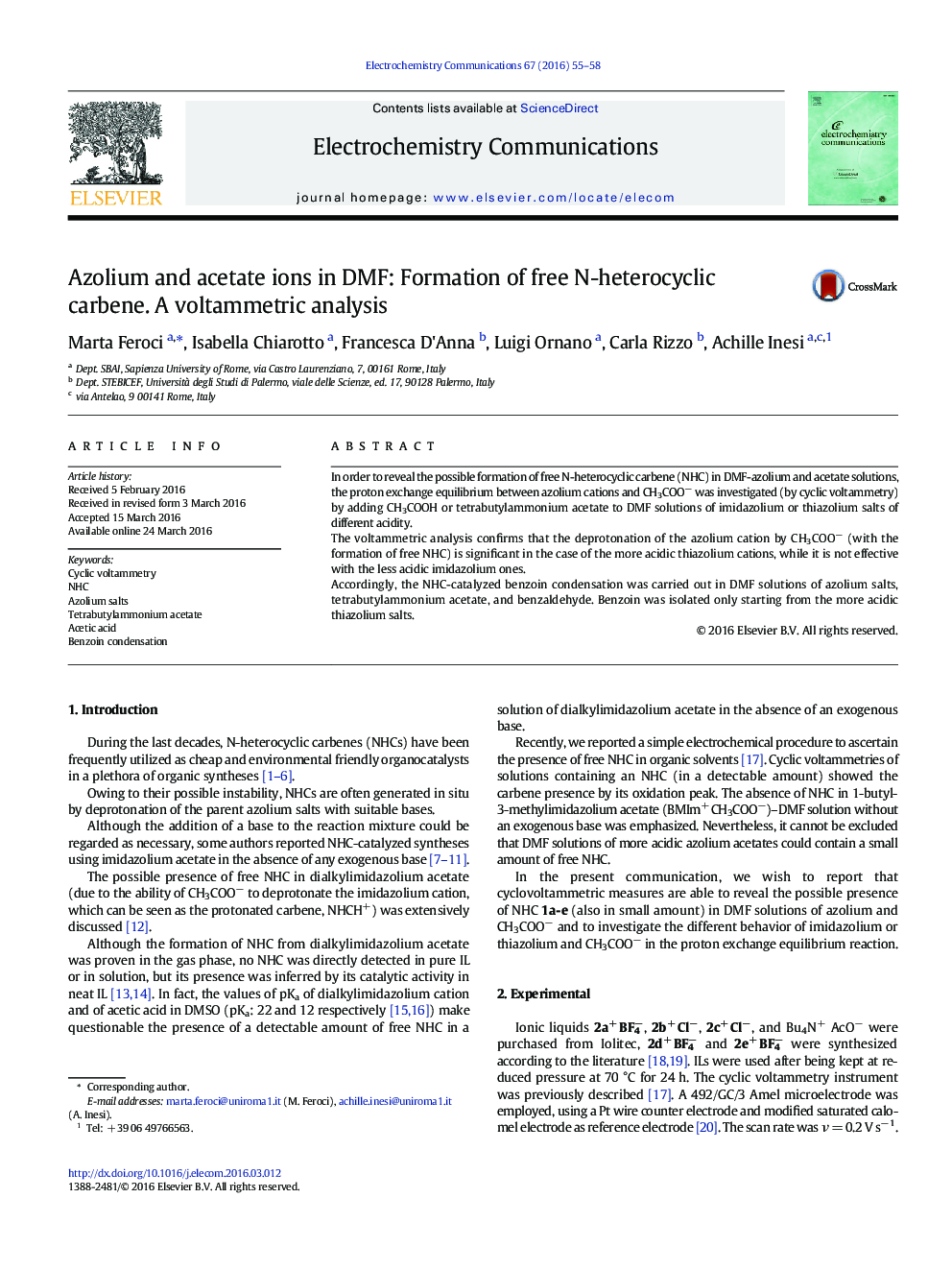| Article ID | Journal | Published Year | Pages | File Type |
|---|---|---|---|---|
| 178642 | Electrochemistry Communications | 2016 | 4 Pages |
•Acetate ion can deprotonate thiazolium cations to give the free NHC in DMF.•Acetate ion cannot deprotonate imidazolium cations to give the free NHC in DMF.•Cyclic voltammetric analysis can evidence NHC in azolium and acetate solutions.•The thiazolium and acetate couple in DMF can catalyze the benzoin condensation.•The imidazolium and acetate couple in DMF cannot catalyze the benzoin condensation.
In order to reveal the possible formation of free N-heterocyclic carbene (NHC) in DMF-azolium and acetate solutions, the proton exchange equilibrium between azolium cations and CH3COO− was investigated (by cyclic voltammetry) by adding CH3COOH or tetrabutylammonium acetate to DMF solutions of imidazolium or thiazolium salts of different acidity.The voltammetric analysis confirms that the deprotonation of the azolium cation by CH3COO− (with the formation of free NHC) is significant in the case of the more acidic thiazolium cations, while it is not effective with the less acidic imidazolium ones.Accordingly, the NHC-catalyzed benzoin condensation was carried out in DMF solutions of azolium salts, tetrabutylammonium acetate, and benzaldehyde. Benzoin was isolated only starting from the more acidic thiazolium salts.
